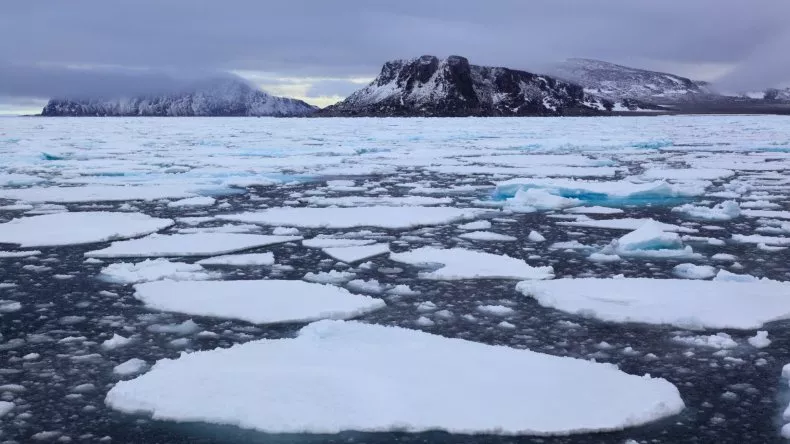Antarctica is considered as one of the toughest hostile ecosystems on the planet. It's also one of the least explored. Many of us see the mainland as a huge snowy wasteland inhabited only by penguins and seals; but under its frozen surface, scientists are discovering extensive networks of intricate living forms unseen and observed anywhere else on the globe.
Antarctic ice is classified into two types: land glaciers and sea ice. When the top levels of the Southern Ocean freeze, sea ice forms. The arctic ice is seasonal, and most of the marine ice melts away in the summer. As soon as the ice melts, colonies of photosynthetic algae appear in these areas.
However, it was previously considered that the compacted sea ice prohibited any light from getting to the strata underneath before this seasonal shift. A new study, however, reveals that swarms of photosynthetic algae known as phytoplankton can develop and even survive before the ice melts.
Photosynthetic Algae Thriving Underneath
Phytoplankton, sometimes referred to as microalgae, are algae that, like terrestrial plants, have chlorophyll and therefore require sunlight to survive and thrive. The majority of phytoplankton are buoyant as well as float in the upper layers of the ocean, wherein sunlight penetrates. Inorganic nutrients, like nitrates, phosphates, and sulfur, are also required by phytoplankton, which they transform into proteins, lipids, and carbohydrates, as per National Oceanic and Atmospheric Administration (NOAA).
The phytoplankton is the foundation among most aquatic food chains, and it enhances the growth of those other sophisticated life forms. Scientists from Brown University and the University of Auckland discovered evidence for broad swaths of these photosynthetic life forms surviving beneath the frozen surface using data acquired through NASA's Earth surveillance satellites and on-site water floats.
Finding these blooms challenges the notion that areas under sea ice are devoid of life and raises innovative development research questions about the food webs that may exist beneath the ice in Antarctica, according to Christopher Horvat, who directed the study that was published in the scientific journal Frontiers in Marine Science.
Researchers believe it might span 5 million square miles of the Southern Ocean's undersea area. The ice sheets in the Southern Ocean consist of distinct sheets of packed ice. Small patches of open water somewhere between those sheets allow light to get through, allowing photosynthesis to occur.

This stock image shows sea ice floes. Gaps between sheets of sea ice allow light to penetrate into the water beneath.
Freezing Landscapes and Secret Paradise
As per Huw Griffiths, a maritime biogeographer of the British Antarctic Survey, sea ice is generally just three to ten feet thick, allowing some light to reach the aquatic systems below. However, life has been discovered in locations that have never before seen the sunshine of day. According to Griffith's study, many icebergs are so deep that there is no optimism about the seafloor below.
The majority of ice shelves are composed of the second form of Antarctic ice, land ice. They occur when massive slabs of ice are forced off the ground and into the ocean surface. Apart from sea ice, such slabs can be hundreds of feet deep. Griffiths and his research team found marine living beings on a rock on the seafloor 3,000 feet near the ground of an Antarctic ice shelf in 2021.
Moving inland, Antarctica's freezing landscape hides a secret paradise of thousands of subglacial rivers and lakes teeming with life. Lake Whillans, the continent's third biggest lake, which sits 2600 feet below under West Antarctic Ice Sheet, was discovered to be home to approximately 4,000 distinct microbial species in 2014.
Combined, these discoveries show how diverse the many living types are beneath the Antarctic ice. Antarctica's unspoiled ecosystems are in jeopardy as human influence spreads to every part of the earth. The Antarctic ice glaciers are melting at a pace of around 150 billion tons annually as a consequence of global warming, with disastrous ramifications for global sea levels.
RELATED ARTICLE: Phytoplankton Could Solve Climate Change, Reduce Carbon Dioxide in Ocean [Simulation]
Check out more news and information on Planktons in Science Times.














